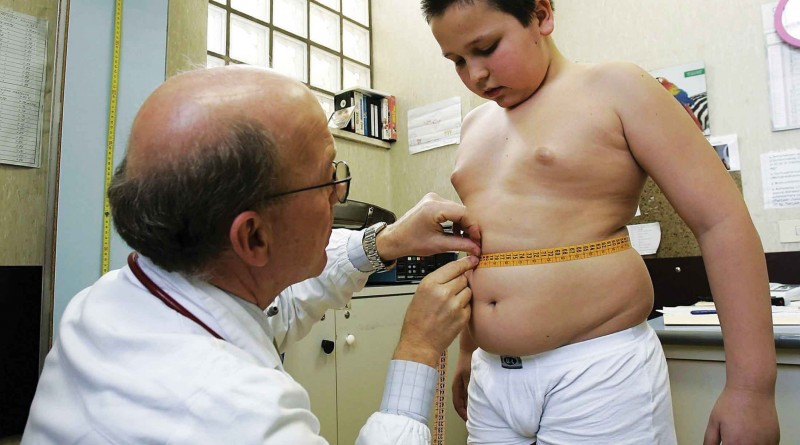Unhealthy Growth
Childhood Obesity is rising at an alarming rate in the country. Urgent measures are needed to tackle the growing menace
By Dr Neelam Mohan
One of the rising epidemics in India is obesity in children. In our country, a fat child was and still is considered attractive and isoften viewed as “healthy child”. It’s high time we raised awareness amongst parents regarding the harmful effects and the risk factors of obesity in children.
Prevalence of obesity and overweight in India
A recent study from South India stated that the prevalence of obesity in children, aged 6–15 years was 3% for boys and 5.3% for girls in urban schools in Kochi and Kerala. Also, prevalence of obesity (7.5%) and overweight (21.9%) were the highest among high income group and lowest (1.5% and 2.5%) among low income group. Another study from rural area in Bangalore showed that the prevalence of obesity among 1,170 college students aged between 15 to 19 years was 7.2% and another 6.1% were overweight.
A study from North India reported prevalence of childhood obesity of 5.59% in higher socio-economic strata when compared to 0.42% in lower socio-economic strata. However, a recent study has shown that 3 to 5% of children from a government school in North India were overweight. Slowly, but steadily, the epidemic of childhood obesity seems to be spreading to the middle and lower socio-economic groups as well.
What is obesity and how do we measure it?
The World Health Organization (WHO) defines obesity as a condition of abnormal or excessive fat accumulation in adipose tissue, to the extent that health may be impaired.
Measurement of obesity
Weight adjusted for height squared [body mass index (BMI in kg/m2)] is a useful index to assess overweight and is a fairly reliable surrogate for adiposity/fat.
A limitation of BMI, however, is that it cannot differentiate an obese individual from a muscular one and cannot locate the site of fat, e.g., people with ‘central obesity’ may have normal BMIs. As per WHO classification (for adults), BMI >25 = overweight and BMI >30 = obesity.
The Inter-national Obesity Task Force (IOTF) has proposed the standards for adult obesity in Asia and India – BMI >23 = overweight and BMI >25 = obesity. Similarly, as per Coronary Artery Disease in Asian Indians (CADI Research Foundation), the abdominal girth (cut off Waist circumference) >80 cms in Asian Indian women and >90 cms in Asian Indian Men are classified as central obesity.
In children and adolescents, BMI charts are available from CDC and IAP separately for boys and girls which when plotted on the graph gives a clear picture regarding overweight / obesity.
What is the Risk of obesity in children?
More than 50% of fat children become obese adults and all complications of adult obesity are made worse by the obesity begins in childhood.
Obesity and overweight in children are linked with more serious and chronic health problems such as follows –
Respiratory – Asthma, Obstructive Sleep Apnea (OSA), Obesity-hypoventilation syndrome, Exertional dyspnea, Chronic obstructive pulmonary diseases (COPD), Pulmonary Embolism, Aspiration Pneumonia
Endocrine Disturbances – Type 2 diabetes (High association) which may indirectly or directly damage nerve cells and blood vessels, insulin resistance, increased insulin secretion, decreased progesterone levels in women and decreased testosterone levels in men, polycystic ovarian syndrome in adolescent females.
Cardiac – High blood pressure, high cholesterol, heart disease, dyslipidemias
Hepatic and gastric disorders – Hepatic steatosis, gall stones, Gastro-oesophageal reflux (GERD) and Gastric emptying disturbances
Mental health – Restlessness, Depression, Disordered sleep patterns, low self confidence and self-esteem
Orthopedic disorders – Slipped capital femoral epiphysis and Blount disease Arthritis and Osteoarthritis in later stages
Risk factors for obesity in Children
Eating Habits – Change ineating patternandchoices of children are the major culprit for rising overweight & obesity in children and adolescents in India.
There is a major shift towards consumption of high calorie fast food, junk food with consumption of cold drinks/sweetened drinks & foods with huge amount of sugars. Emphasis on consumption of vegetables and fruits is not adequate.
Parents due to ignorance or lack of time in cases of families with working women overlook the feeding habits of children.
Kids nowadays spend more time indoor watching TV, playing video games, using smart phones/computers and the time spent in outdoor physical activity is tremendously reduced.Unfortunately physical activities/physical education program in schools are also much less now.
Toddler nutrition – In presenttime, childrenare most of the times overfed rather than giving complete nourishment; this is because mother thinks that overfeeding will complete their nourishment. It’s often seen that when parents/mothers do not work on the right feeding habits in toddlers, it gets difficult to inculcate those habits later in childhood. A toddler who does not taste or eat vegetables + fruits at this age mostly would be reluctant to do so in later stages of childhood.
Myths and Truths about obesity in children
Myth – Childhood obesity is genetic, so there’s nothing you can do about it?
Truth – Though genetic constitution does influence in weight of an individual, it’s the eating pattern and physical activities that are major contributors towards obesity.
Myth– Breastfeeding longer than six months may result in children being less overweight later in life?
Truth – Various studies have found that breastfeeding for longer than six months may result in children being less overweight later in life.
Myth – Children who are obese or overweight should be put on a diet.
Truth– What is required is to avoid overfeeding and to give a balanced healthy diet with do’s & don’ts to gradually reduce the weight.
(The author is Director, Department of Paediatric Gastroenterology, Hepatology & Liver Transplantation, Medanta, The Medicity Hospital, Gurgaon.


